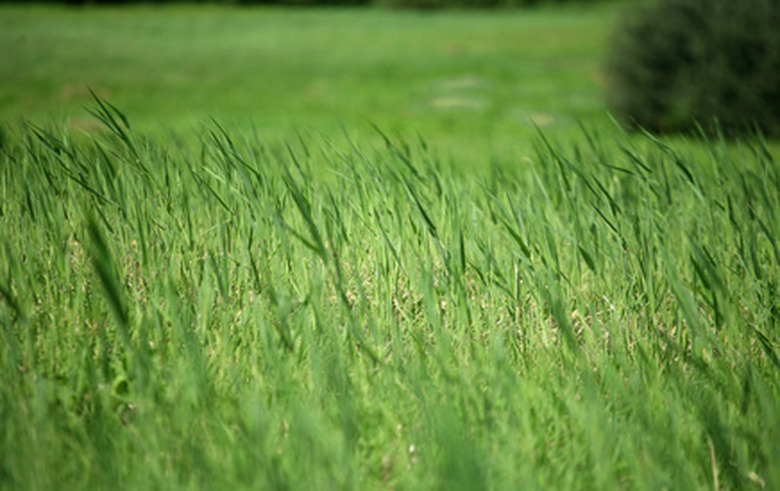How To Grow Grass In Acidic Soil
Nothing makes a landscape look more finished than a lush, green lawn. Typically, growing grass is a simple process — as long as the site is well-prepared in advance. However, when you try to grow grass in acidic soil, you can have less than desirable results. That is why it is essential to modify the soil before spreading the grass seed.
Step 1
Plant to grow grass seed in acidic soil in the spring or summer. This is the best time to keep the grass seed moist without constantly having to water it. It also helps you avoid constantly weeding the area.
- Nothing makes a landscape look more finished than a lush, green lawn.
- That is why it is essential to modify the soil before spreading the grass seed.
Step 2
Remove debris from the site. Discard rocks, branches and weeds. Dig up the weeds if you can. A chemical weed killer will also work, but you must wait several months to plant the grass seed afterward. Break up soil clumps that are more than 1 inch in diameter.
Step 3
Determine the soil's pH with a soil test kit. The best level for growing grass is between 6.0 and 7.5. Modify acidic soil by adding lime to increase the pH level. Add 4 oz. of hydrated lime per square yard in sandy soil, 8 oz. for loamy soil, 12 oz. in clay dirt and 25 oz. in peaty soil.
- Remove debris from the site.
Step 4
Loosen the top 3 inches of soil. Use a hand tool such as a metal rake or garden hoe in small planting areas and a rototiller in larger areas.
Step 5
Fertilize the soil before planting grass seed. Apply a food high in phosphorus to give the acidic soil more nutrients. Work it into the soil with the rototiller.
Step 6
Level the planting site with a metal rake. Fill low-lying areas in with soil. Dips will cause water to gather, which will make the grass seed wash away.
- Loosen the top 3 inches of soil.
- Apply a food high in phosphorus to give the acidic soil more nutrients.
Step 7
Water the planting area lightly. Lay down the seed using a hand spreader or mechanical spreader, depending on how large the area is. Lay down enough so there won't be gaps, but don't lay down too much or the seed will fight for space. Rake over the seeds gently to cover them with a thin layer of soil.
Step 8
Water the grass seeds. Keep the moist constantly until they germinate. Once they sprout, reduce watering to once or twice daily in hot weather.
- Water the planting area lightly.
- Rake over the seeds gently to cover them with a thin layer of soil.
Tip
Water established lawns 1 inch per week.
Things Needed
- PH test kit
- Lime
- Rake
- Garden hoe
- Fertilizer
- Mechanical or hand spreader
